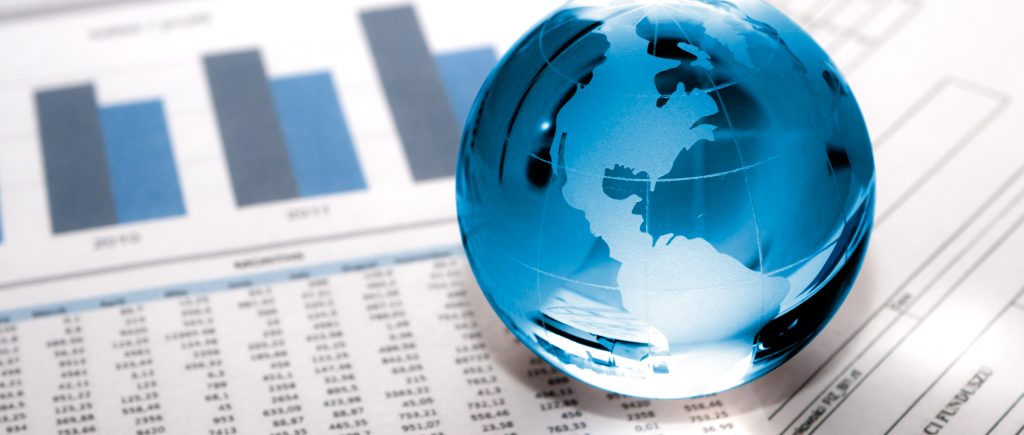US Data released on Friday showed the Employment Cost Index (ECI) rose 1% during the fourth quarter, and 4% during the year. Analysts at Wells Fargo point out the quarterly increase was more restrained than Q3’s 1.3% gain, and they consider that may tamp down fears of a wage-price spiral amid signs businesses are not upping pay at such a frenzied pace.
FOMC and the USD
The dollar rally that started late Wednesday on FOMC Chairman Jerome Powell’s hawkish comments on the policy outlook stayed intact on Thursday. The US Dollar Index broke above 97.00 for the first time in 19 months and was last seen posting small gains above 97.30. On a weekly basis, the index is up nearly 2% and remains on track to post its largest one-week gain in seven months.
The Fed’s policy statement showed earlier in the week that policymakers grow increasingly concerned about the inflation outlook. In the second half of Friday’s session, the Core PCE Price Index leaped 5.8% in 2021 after another sharp increase in December, underscoring why the central bank is moving to raise interest rates for the first time in four years.
The cost of goods and services advanced 0.4% in December, based on the government’s personal consumption expenditure price index. The fresh data has allowed the dollar to continue to outperform its rivals heading into the weekend. On the flip side, a soft inflation reading could cause the greenback to lose some interest but such a market reaction is likely to remain short-lived.
Eurozone
Confidence among the eurozone’s consumers and businesses fell in January to the lowest level since April as the increase in Covid-19 infections due to the Omicron variant weighed on the economy.
Germany’s Economy Adviser in a statement called upon the European Central Bank (ECB) on Friday to act on inflation in the euro is persistent while noting that there was no reason for a rate hike yet.
The European Commission said Friday that its economic sentiment indicator, an aggregate measure of business and consumer confidence, fell to 112.7 in January from 113.8 in December. Economists polled by The Wall Street Journal expected the index to come in at 114.0.
EUR/USD failed to shake off the bearish pressure and touched its weakest level since June 2020 below 1.1130 Friday. Although the near-term technical outlook shows that the pair remains extremely oversold, buyers are unlikely to take action with the Fed’s hawkish policy outlook favouring the dollar.
Crude Oil
Front-month WTI futures hit fresh seven-year peaks on Friday, reaching $88.82 for the first time since October 2014, before pulling back below $88.00 again. Still, that leaves WTI trading more than 50 cents higher on the session and about $3.0 higher on the week.
WTI is on course to post a sixth successive weekly rally, a run that has seen the American benchmark for sweet light crude oil rally more than $20.00 from the low-$66.00s. The next area of major upside resistance is the psychologically important $90.00 level and then the late-2013 lows in the mid-$91.00s just above it.
Oil market continue to cite a combination of bullish factors on both the demand and supply side as supporting the recent rally. Firstly, on the demand side, as the Omicron variant fades in major developed economies facilitating “reopening”, demand has held up and is expected to post strong growth for the year.
On the supply side, market commentators continue to cite OPEC+ capacity constraints and geopolitical tensions between NATO/Ukraine/Russia as supportive. Traders have also cited an increase in the threat to UAE output presented by an uptick in Iran-back Houthi militias based in Yemen.
Gold Versus Fed’s Hawkish Language
The precious metal has fallen by 4% in the week, spurred by the hawkish US Fed. Fed’s Kashkari expects that the Fed would hike rates at the March meeting. Gold versus the US dollar extended its fall since Wednesday when the FOMC issued the first monetary policy statement of 2022. During the New York session, the gold index (XAU/USD) was trading at $1,785.
The market sentiment has improved since the US cash equity markets opened. However, European equity indices have been unable to get back in the green territory. Before Wall Street opened, the US Bureau of Economic Analysis unveiled the Federal Reserve favorite gauge of inflation, the Core Personal Consumption Expenditure (PCE) for December, the reading reflected an increase by 4.9%, higher than the 4.8% foresee by analysts and 0.2% higher than the November reading.
Minnesota Fed President Neil Kashkari said that the Fed needs to bring the US economy in balance by raising interest rates. Kashkari noted that the central bank does not know how many increases will take and emphasized that the Fed would be adjusting as more data comes in.
Later on, he said that “inflation is higher than expected” and expects the Fed to raise rates at the March meeting in an interview with Yahoo! Finance. Therefore, concerns about the US central bank tightening dent the market sentiment
Traders keep digesting the Fed’s awaited change in monetary policy stance. Although the monetary policy statement was viewed as a hawkish hold, the initial reaction was no surprise. Nevertheless, Fed’s Chair Powell press conference rocked the boat, saying that FOMC “is of a mind to raise the federal funds rate at the March meeting”.
European Equities
European stocks fell sharply on Friday, wrapping up another volatile week for markets amid fears over the direction for central bank policies.
The pan-European Stoxx 600 closed down by 1%, with mining stocks shedding 2.8% to lead losses as almost all sectors bar retail and travel slipped into the red.
It marks the fourth consecutive week of losses for equity markets in Europe — and the first time this has happened since March 2020.
Earnings were a key driver of individual share price movement on Friday. Dutch lighting company Signify jumped nearly 11% after a strong set of results, while Swedish clothing giant H&M gained 5% after beating profit expectations.
At the bottom of the European blue chip index, German chemicals company Henkel dropped more than 11% after its earnings report.
Markets have whipsawed throughout the week as investors reacted to the Fed’s indication on Wednesday that it could soon raise interest rates for the first time in more than three years, and to rising geopolitical tensions between Russia and the West over Ukraine.
Wall Street
World stocks rallied on Friday as investors turned their eyes toward corporate earnings and ignored geopolitical turmoil and Federal Reserve tightening concerns. Strong earnings from tech firms including Apple (AAPL.O), which rose nearly 7% after reporting record sales over the holiday quarter, buoyed US markets during the session. All three major US stock indexes closed higher. However, the pan-European STOXX 600 (.STOXX) index closed down 0.99% on the day for a fourth week of losses, weighed down by worries over the situation in Russia and Ukraine.
Economic data helped eased inflation fears, with US data showing consumer spending and labor cost rises were weaker than expected in December. The widely-watched employment cost index came in a touch softer than expected suggesting wages may start to cool somehow. Mounting inflation pressures could force the Fed to rapidly hike interest rates, stifling growth.
Hot wage growth has been a key factor behind the Fed’s pivot, so if this trend continues that would relieve some pressure. MSCI’s 50-country main world index rose 1.49% but remained on the brink of its worst January since the 2008 global financial crisis after shedding roughly $7 trillion in value.
The big issue is the Fed, which is clearly in a tightening cycle. Financial market support is not part of the central bank’s agenda. The only question is whether the markets have fully digested Powell’s guidance in his press conference… I would expect the equity and bond markets to find bottoms at some point relatively soon,” he added.
World stocks suffer January plunge
The Fed on Wednesday indicated it is likely to raise rates in March, as widely expected, and reaffirmed plans to end its pandemic-era bond purchases that month before launching a significant reduction in its asset holdings.
On Wall Street, the Dow Jones Industrial Average rose 1.65% and the S&P 500 gained 2.43%. The Nasdaq Composite added 3.13%. The prospect of faster or larger US interest rate hikes and possible stimulus withdrawal lifted the dollar index 0.05%, while the euro last remained unchanged at 0.05%.
On bond markets, US Treasury yields fell across the curve on Friday on month-end buying, as the Fed’s favored inflation gauge, the core personal consumption expenditure price index (PCE), rose no more than had been expected. The 2-year and 10-year yield curve steepened to as much as 65.10 basis points, after hitting its narrowest spread since November 2020 on Thursday. That curve was last at 61.10 basis points.
Bitcoin
Bitcoin price has been declining since November. During the last week, the cryptocurrency’s also declined and reports say it was caused by the new US regulation of digital assets. latest price of Bitcoin is 50% below its November high. From $69,000 in November, Bitcoin crushed its price value to $32,951 last week. Diverse cryptocurrencies have lost considerable value. For example, Ethereum, common crypto used by NFT collectors is at its lowest point since July. Ethreum dropped almost $1,000 in value in January.
Bank of England
Financial markets are pricing in a 95% chance of UK interest rates rising by 0.25% to 0.5% on Thursday, with this seen as the first hike of four expected this year. The Bank of England is being tipped to raise interest rates again next week, which would be the first back-to-back UK hike since 2004.
Deutsche Bank is one of those expecting the BoE to match January’s rise with another 25 basis points (0.25%) increase, taking the Bank Rate to 0.5%. “We expect the decision to be unanimous,” said DB.
Deutsche added that with the Bank Rate reaching 0.5%, it expects the Monetary Policy Committeeto confirm that the corporate bond-buying programme will stop. This would see the end of roughly £28bn of monetary stimulus with a further £9bn dropped over the remainder of the year.
 Noor Trends News, Technical Analysis, Educational Tools and Recommendations
Noor Trends News, Technical Analysis, Educational Tools and Recommendations





